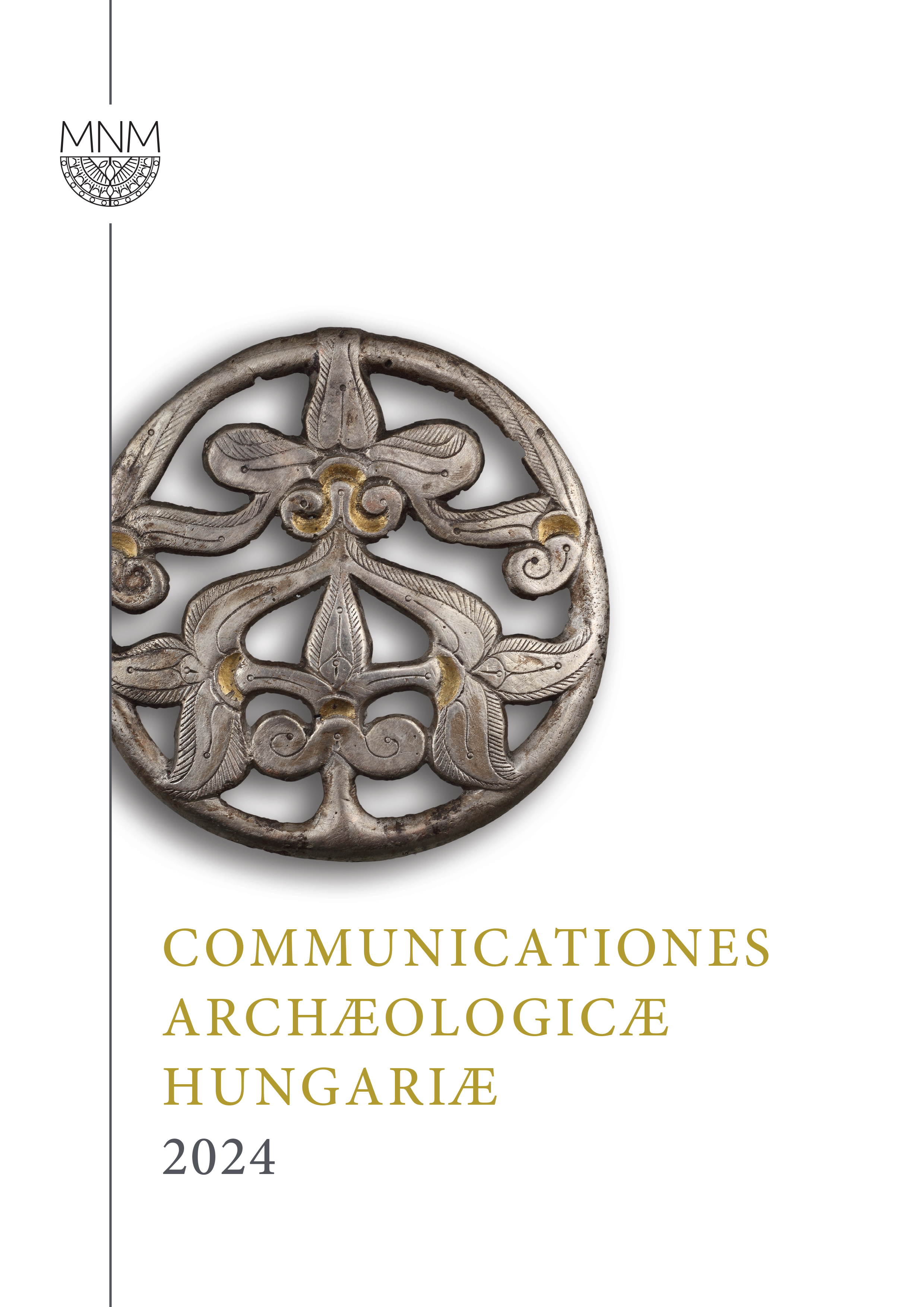Published 2024-12-19
Keywords
- Late Bronze Age,
- gold,
- collars,
- hoarding,
- Urnfield culture
- Western Hungary (Transdanubia),
- CT ...More
How to Cite
Abstract
An assemblage of over 5800 metal artefacts was discovered on Somló Hill during an archaeological metal detector survey in 2024. Preliminary typo-chronological examinations suggest that the new hoard most plausibly dates to the second half of the Ha B period. This report focuses on the most outstanding artefact in the assemblage, a gold-foil-covered neck collar (Halskragen). This collar is a unique piece of jewellery, not yet fully matched in style and form in Transdanubia. The closest analogues of this find are known from the hoards allegedly recovered in the ‘Thaya River region’, now in the collection of the Museum for Prehistory and Early History Berlin State Museums (Museum für Vor- und Frühgeschichte Staatlichen Museen zu Berlin). Similar collars, looted by illegal detectorists allegedly on the hillfort ‘Tabulová hora’ in Moravia, are known to scholars from photographs only. Gold products decorated with concentric circles and cord-imitating patterns are known from the younger and from the late Urnfield periods in Transdanubia. The diadem and domed discs from Velem-Szent Vid are closely related to the Somló find in this respect. The best European analogues of this style are found on gold-foil-covered discs, diadems and gold vessels from Central and Northern Europe. The Somló collar provides further evidence that its place of discovery, the butte of Somló, served as one of the elite centres during the Ha B phase of the Late Bronze Age.


